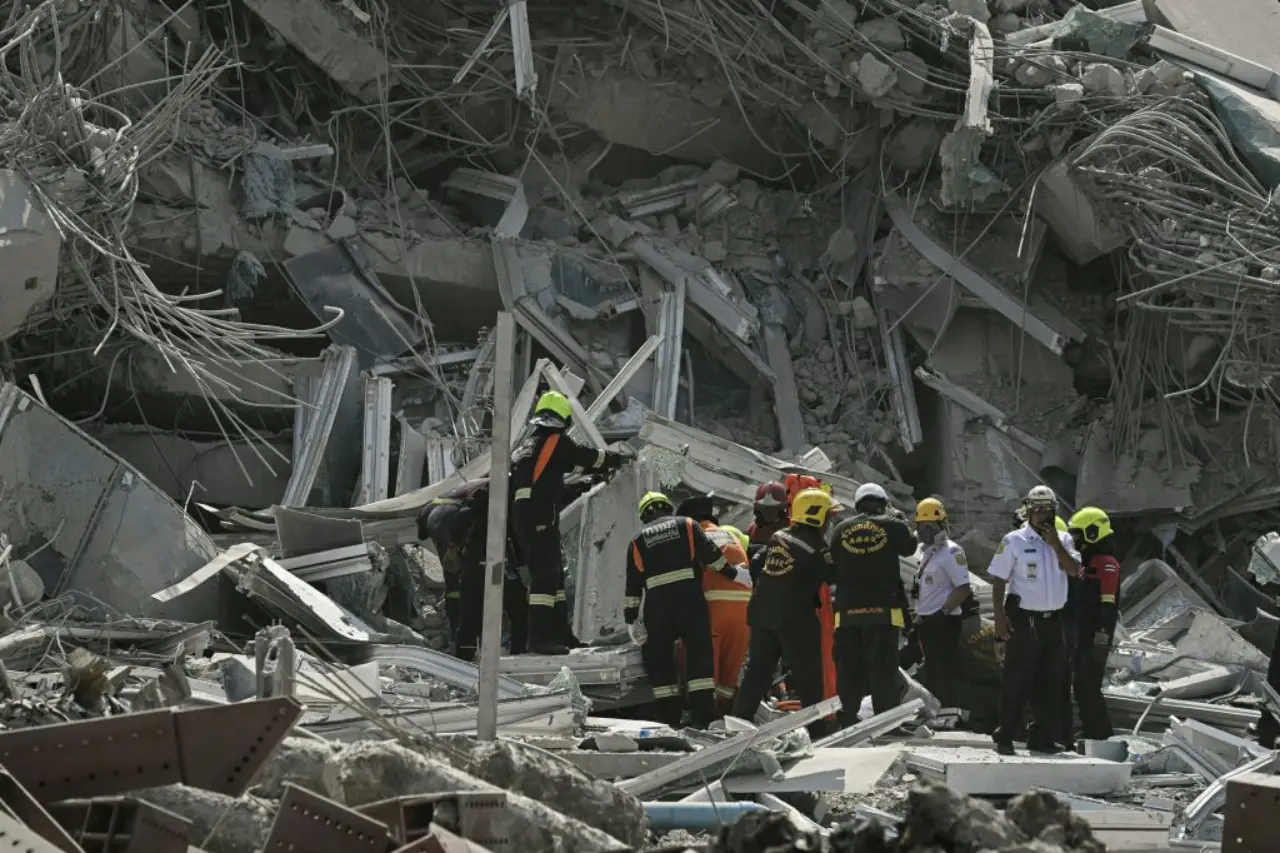Impact in Myanmar
In Myanmar, the earthquake resulted in over 140 fatalities and extensive damage to infrastructure. citeturn0search0 Mandalay experienced severe devastation, with numerous buildings collapsing and residents evacuating to open spaces for safety. Communication networks and electrical infrastructure were significantly impaired, complicating assessment and relief efforts.
Impact in Thailand
In neighboring Thailand, the tremors were strongly felt, particularly in Bangkok, which is approximately 600 miles from the epicenter. The city, home to over 17 million people, experienced the collapse of a 33-story skyscraper under construction near the popular Chatuchak Market. This incident resulted in at least 10 deaths, 16 injuries, and 101 individuals reported missing. Dramatic footage captured the moment the building crumbled, sending a massive cloud of dust into the air as workers fled the scene.
The earthquake caused widespread panic in Bangkok, with residents evacuating high-rise buildings and seeking refuge on the streets. Water from rooftop pools was seen cascading down skyscrapers due to the intense shaking. citeturn0news17 The city’s mass transit systems, including the BTS Skytrain and MRT, were temporarily suspended for safety inspections but have since resumed operations.
Structural Damage and Casualties
Beyond the collapsed skyscraper, several other structures in Bangkok sustained damage. A three-story building in the Bang Khun Thian district collapsed, and multiple high-rise buildings reported structural cracks. Hospitals such as King Chulalongkorn Memorial Hospital experienced wall cracks and ceiling collapses, prompting evacuations and temporary closures.
In Chiang Mai, northern Thailand, significant tremors led to structural damages, including cracks in buildings and infrastructure. The Maharaj Nakorn Chiang Mai Hospital reported structural issues, and authorities advised residents to remain cautious of potential aftershocks.
Government Response
Thai Prime Minister Paetongtarn Shinawatra declared Bangkok an “emergency area” and urged residents to evacuate tall buildings as a precaution against aftershocks. Emergency services are conducting search and rescue operations, focusing on locating individuals trapped in collapsed structures. Hospitals are on high alert, and temporary shelters have been established for those displaced by the disaster.
Regional Effects
The earthquake’s impact extended beyond Myanmar and Thailand. In China, the provinces of Yunnan and Sichuan experienced tremors, with reports of structural damage and injuries. Cities such as Ruili and Kunming felt significant shaking, prompting evacuations and safety inspections.
In Vietnam, cities including Hanoi and Ho Chi Minh City reported feeling the tremors, leading to the evacuation of several buildings as a precautionary measure. No casualties have been reported in these areas.
Scientific Perspective
Seismologists attribute the earthquake to “strike-slip faulting” between the India and Eurasia tectonic plates, causing the plates to slide horizontally against each other. This tectonic activity is characteristic of the region, though earthquakes of this magnitude are rare. The shallow depth of the quake exacerbated its destructive potential, leading to severe ground shaking across a wide area.
Ongoing Efforts
Rescue operations are ongoing, with emergency responders working tirelessly to locate survivors amidst the rubble. Authorities are assessing the full extent of the damage, and international aid has been offered to support relief efforts. Residents in affected areas are advised to remain vigilant and follow official guidance as aftershocks continue to pose risks.





